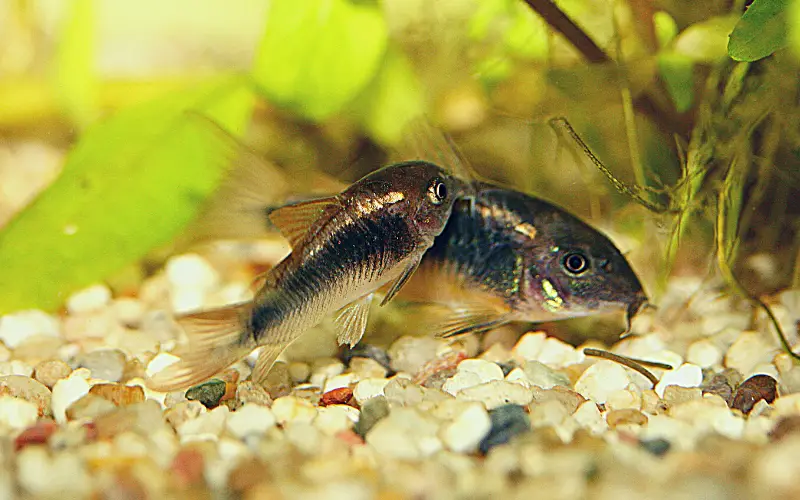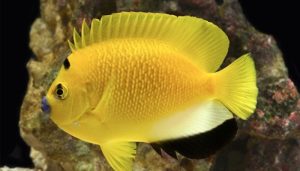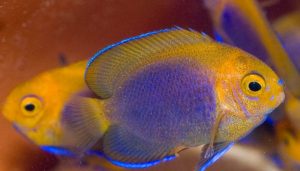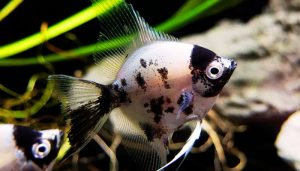Are you a proud owner of Corydoras catfish in your aquarium, or are you considering adding these charming little swimmers to your aquatic family? One crucial aspect of caring for these delightful creatures is understanding and maintaining the correct Corydoras water parameters.
Corydoras catfish are popular aquarium fish known for their peaceful nature and hardy disposition. However, providing the proper Cory water parameters is essential to keep them healthy and thriving.
The ideal water parameters for Corydoras catfish are a pH of 7.0 to 8.0, a water tank temperature of 72 to 81 degrees Fahrenheit, and a tank water hardness of 5 to 19 dGH.
Keeping their tank water conditions within these parameters can help your Corydoras catfish live long and healthy lives.
Corydoras catfish, or “Cory cats” or “Corydoras,” are popular among aquarium enthusiasts for their playful personalities and unique appearance.

These small, bottom-dwelling fish bring life and character to your tank, but to keep them healthy and thriving, you must create a tank environment that imitates their natural habitat as closely as possible.
In this Corydoras catfish care guide, we’ll dive deep into the world of Cory catfish water parameters, exploring everything you need to know to ensure the well-being of your aquatic companions.
Whether you’re a seasoned aquarist looking to fine-tune your tank conditions or a newbie eager to learn the ropes, this guide will equip you with the knowledge to create the ideal environment for your Corydoras catfish.
So, let’s get started on this aquatic adventure!
Table of Contents
ToggleUnderstanding Cory Catfish Care & Aquarium Requirements
Before delving into the specifics of corydora water parameters, let’s first get acquainted with Corydoras catfish. These small and peaceful fish are a favorite among aquarists for their endearing appearance and social behavior. Here’s a quick overview:
– Corydoras Catfish: More Than Just Cute Bottom Dwellers
Corydoras, often affectionately called “cory cats,” are a diverse catfish species known for their distinctive appearance. They are characterized by their armored bodies and whisker-like barbels around their mouths, which give them a unique charm. These fish are typically small, making them suitable for various aquarium setups.
– Ideal Tank Mates for Corydoras
Corydoras are known for their friendly disposition, making them excellent additions to community tanks. They get along well with many tank mates, including peaceful species like tetras, guppies, and rasboras. However, avoiding aggressive or nippy tank companions is essential, as Corydoras can be vulnerable to bullying.
– Tank Size Matters
When setting up a tank for Corydoras, consider the tank size carefully. While they are small fish, they are also active swimmers. A tank size of at least 10 gallons is recommended for a small group of Corydoras. Larger tanks offer more swimming space and stability for the Cory water parameters.
Now that we’ve covered the basics let’s dive into keeping Corydoras healthy: maintaining the right water conditions.
The Importance of Water Conditions
Water quality is paramount for keeping any aquarium fish happy and thriving. However, Corydoras catfish, in particular, are highly sensitive to water parameters. To ensure their well-being, you must pay close attention to the following water conditions:
– Water Temperature
Maintaining the correct water temperature is vital for Corydoras. They thrive in temperatures ranging from 73°F to 77°F (22 -25 Celsius). Sudden temperature fluctuations can stress these fish, so invest in a reliable aquarium heater to keep the temperature stable.
– pH Levels
Corydoras prefer slightly acidic to neutral water conditions. Aim for a pH range of 6.4 to 7.6. Regularly monitor the pH levels and make adjustments using pH buffers or conditioners.
– Ammonia and Nitrites
Nitrites and Ammonia are toxic to fish, and Corydoras are no exception. Ensure your aquarium is fully cycled to eliminate these harmful substances. Regular water tank changes and a good filtration system will help maintain low Ammonia and nitrite levels.
– Nitrates
While nitrates are less poisonous than Ammonia and nitrites, high levels can still stress Corydoras. Keep nitrates below 40 ppm by performing routine water changes and maintaining a well-balanced aquarium.
– Hardness
Corydoras prefers soft to moderately complex water with a dGH (degree of general hardness) of 2 to 15. Adjust water hardness using appropriate supplements if necessary.
3 Deadly Corydoras Water Parameters Mistakes!
Now that you’re well-informed about the essential corydora water parameters let’s discuss the three deadly mistakes that many aquarists make when keeping Corydoras:
Mistake #1: Overlooking Water Changes
Corydoras are sensitive to water quality, and neglecting regular water changes might lead to a buildup of toxins like Ammonia and nitrites. Perform 20-30% weekly water changes to ensure a clean and healthy fish tank environment for your corys.
Mistake #2: Incompatible Tank Mates
While Corydoras are peaceful, they can become stressed or injured if housed with aggressive or prominent tank mates. Always research the compatibility of your chosen tank companions to prevent any conflicts.
Mistake #3: Inadequate Substrate
Corydoras have delicate barbels to search for food on the substrate. Rough or sharp substrates can damage these sensitive structures. Opt for smooth sand or fine gravel as your tank’s substrate to protect your Corydoras’ barbels.
Cory Fish Behavior and Tank Mate Compatibility
Cory catfish are peaceful, social fish that are native to South America. They are bottom-dwelling fish and spend most of their time sweeping for food on the substrate. Cory catfish are also shoaling fish, so keeping them in small groups of at least six individuals is essential.
Here are some of the things to consider when choosing tank mates for Cory catfish:
- Temperament: Cory catfish are peaceful fish, so it is crucial to choose tank mates that are also peaceful. Some good tank mates include tetras, albino cory, panda cory, rasboras, and betta fish.
- Size: Cory catfish are small fish, so choosing tank mates that are a manageable size is essential. Some good options include neon tetras, ember tetras, and harlequin rasboras.
- Water conditions: Cory catfish are hardy fish species and can tolerate various water conditions. However, it is still important to match your tank’s water conditions to your fish’s specific needs.
- Activity level: Cory catfish are active fish, so choosing Cory catfish tank mates with similar activity levels is vital. Some good options include danios, barbs, and gouramis.
When choosing tank mates for cory catfish, it is essential to do your research and select fish compatible with their temperament, size, and water chemistry. Doing so can create a happy and healthy community tank for your cory catfish.
What Size Tank Does Cory Catfish Need?
The minimum tank size for cory catfish depends on the species. Dwarf species, such as the Pygmy Cory catfish (Corydoras pygmaeus) and the Panda Corydoras (Corydoras panda), can be kept in a 10-gallon tank. However, most other species of cory catfish need at least a 20-gallon tank.
Here is a table of the minimum tank sizes for some popular species of Cory catfish:
| Species | Minimum Tank Size |
|---|---|
| Pygmy Corydoras (Corydoras Pygmaeus) | 10 gallons |
| Panda Corydoras (Corydoras panda) | 10 gallons |
| Bronze Corydoras (Corydoras aeneus) | 20 gallons |
| Peppered Cory catfish (Corydoras paleatus) | 20 gallons |
| Sterbai Corydoras (Corydoras sterbai) | 20 gallons |
| julii Cory catfish (Corydoras julii) | 20 gallons |
It is important to note that these are just minimum tank sizes. The ideal cory catfish tank size is 30 gallons or more. This will give them plenty of space to swim and explore and a more stable environment.
When choosing a tank for Cory catfish, it is also essential to consider the following factors:
- The tank should have a sandy substrate—Cory catfish love to sift through the sand for food.
- The aquarium tank should have plenty of hiding places. Cory catfish are shy fish that need homes to hide from predators.
- The tank should have a sound filtration system. Cory catfish produce a lot of waste, so the filtration system needs to keep the water clean.
- The tank should be heated to between 72 and 78 degrees Fahrenheit.
If you are considering getting cory catfish, research and provide them with the proper care. With appropriate care, cory catfish can make great additions to your aquarium.
Do Cory Catfish Need Sand Substrate?
Cory Catfish, also known as Corydoras catfish, benefit from a sand substrate in their aquarium for several reasons. While it’s not an absolute requirement, providing a sand substrate can enhance their well-being and mimic their natural habitat more effectively.

When choosing sand for your Cory Catfish tank, opt for fine-grain aquarium sand designed explicitly for freshwater setups. Ensure it’s well-washed and free of contaminants before adding it to the bottom of the tank. Additionally, regularly siphon and clean the sand to prevent debris and waste buildup.
While sand is recommended for Cory Catfish, it can adapt to other substrates, such as smooth gravel or bare-bottom tanks, if necessary. However, to provide the best environment for their health and well-being, a sand substrate is a preferred choice.
What Should I Feed My Cory Catfish?
Cory catfish are omnivores, and their diet should consist of a variety of foods, including:
- Sinking pellets and wafers: These are a good staple food for Cory catfish and should make up the bulk of their diet. Look for pellets formulated explicitly for bottom-feeding fish and containing high levels of protein and fiber.
- Live and frozen foods: Live foods, such as frozen bloodworms, brine shrimp, and daphnia, are a good source of nutrients and can help keep your cory catfish active and healthy. Frozen foods are also a good option but should be thawed before feeding.
- Vegetable matter: Cory catfish will also eat some vegetables, such as spirulina, zucchini, and peas. Vegetable matter should be offered to your cory catfish a few times a week.
Feeding your cory catfish a diversified diet is essential to ensure they have all the necessary nutrients. You should also provide them with only as much food as they can eat in a few minutes to prevent overfeeding.
Can You Breed Cory Catfish in Aquariums?
Yes, you can breed cory catfish in aquariums. They are one of the easiest fish to produce and can be done even by beginners. Here are the steps on how to breed cory catfish:
- Set up a breeding tank. The cory fish breeding tank should be at least 10 gallons and have a soft substrate, such as sand or fine gravel. You can also add some aquarium plants, such as java moss or anubias, to provide hiding places for the eggs.
- Get a group of Cory catfish. The ideal ratio is one female to 2 or 3 males.
- Condition the fish. For 2-3 weeks, feed the fish a high-quality diet, including live foods such as brine shrimp and bloodworms. This will help the fish build their strength and stamina for spawning.
- Lower the water level. The water level in the breeding tank should be lowered to about 25-50%. This will help mimic the conditions of the rainy season when cory catfish naturally spawn.
- Increase the temperature. The cory catfish water temperature should be increased to 78-80 degrees Fahrenheit. This will also help to trigger the fish to spawn.
- Remove other fish. If you have any other fish in the tank, remove them before the spawning process begins. This will help to prevent the eggs from being eaten.
- Wait for the fish to spawn. The fish usually generate within a few days of changing the water conditions. The female fish will release her eggs on the substrate, and the male will pollinate them.
- Remove the parents. Once the fish have spawned, remove the parents from the tank. This will help to prevent them from eating the eggs.
- Care for the eggs. The Cory eggs will hatch in about 2-3 days. The fry will be tiny and vulnerable, so providing them with plenty of food and clean water is essential.
You can quickly breed cory catfish in your aquarium with care and attention. Follow the steps above, and you’ll be rewarded soon with a new batch of baby catfish.
Your Burning Questions about Cory Catfish Water Parameters Answered (FAQs)
Can I keep Corydoras in a small tank like a 5-gallon?
While it’s technically possible, it’s not recommended to keep Corydoras in a 5-gallons tank.
What is the ideal tank size for Corydoras catfish?
The ideal tank size for Corydoras is at least 10 gallons, especially if you plan to keep them in a community tank.
Can Corydoras be kept with other fish in a community tank?
Corydoras are peaceful fish that can be kept in a community fish tank with other compatible species.
What are some common tank mates for Corydoras?
Common tank mates for Corydoras include tetras, Rasboras, and other non-aggressive community fish.
How often should I perform water changes for Corydoras?
Regular water changes of about 20-25% every two weeks are recommended to maintain water quality.
Are Corydoras suitable for beginner fishkeepers?
Yes, Corydoras are known for their hardiness and make excellent choices for beginners in the hobby.
Is tap water okay for fish tanks?
Tap water can be used for fish tanks, but it needs to be treated to remove chlorine and chloramine, which are harmful to fish. You can use a water conditioner or let the water sit out for 24-48 hours to allow the chlorine to evaporate.
Final Thoughts
In conclusion, maintaining suitable corydora water parameters is crucial for the health and well-being of your fish. These fantastic little creatures bring life and vibrancy to our aquariums, and it’s our responsibility to create a romantic environment for them to thrive. We can ensure that our Corydoras enjoy optimal conditions by monitoring and adjusting factors such as Cory catfish water temperature, pH levels, and water chemistry. Remember, a happy and healthy Corydoras is a lively and playful one! So, let’s dive into the fascinating world of Corydoras water parameters and create the perfect habitat for these delightful aquatic companions.
You might also like
- Red Blotch Disease Corydoras Treatment: Causes, Prevention & Quick Fix
- How to Tell If Corydoras Are Happy & why it matters?
- Will Corydoras Eat Shrimp? Let’s Clear Up All the Confusion
- Venezuelan Orange Corydoras: Size, Price, Diet & Lifespan
- What Do Cory Catfish Eat in a Tank? (Corydoras Food List)
- Cory Catfish and Betta: 5 Surprising Secrets for Success!
- Cory Catfish Breeding Behavior: (3 WARNING Signs of Trouble)
- Do Corydoras Need a Heater in Tank: (5 Essential Tips!)
- Cory Panda Fish 101: Unlock the Secrets of Cory Panda Fish!
- Ultimate Guide to Cory catfish sterbai Care and Maintenance
- Corydora Hastatus 101: Tail Spot Pygmy Cory Ultimate Guide
- The Ideal Water Temperature for Albino Cory Catfish for Vibrant Health
- Where to Buy Vintage Corydoras Weitzmani Zucht (Ultimate Guide)




